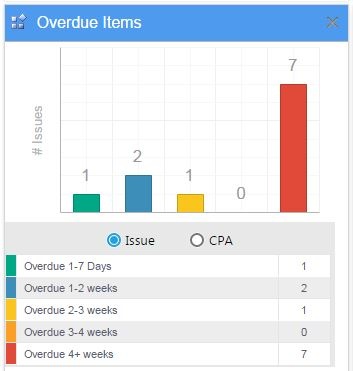Why Overdue Items Safety Chart Is Important

No aviation safety program is perfect.
Safety issues, corrective and preventive actions will inevitably “fall through the cracks” and become overdue while being managed. Problems arise when safety issues and other safety items fall critically behind. This exposes an organization to:
- Negative feedback on aviation safety audits;
- Potential litigation; and
- Negative impacts on aviation safety culture.
Aviation safety managers need to be able to ensure that overdue safety items don’t fall too far behind. Overdue items should be the priority. In larger organizations managing this task can be difficult due to the high volume of required responsibilities.
This aviation safety chart monitors and tracks:
- Issues that are not closed AND past their target closure dates; and
- Sorts them based on how overdue they are.
When safety managers use this chart, they will easily be able to catch issues and corrective actions that are falling behind in the task pipeline and prioritize some safety items that require immediate attention. A chart like this is especially useful before inspections and safety audits by helping management have no overdue items by the time of the audit.
What This Chart Reveals About Aviation SMS Programs

The primary meaning you can extract from this aviation safety chart is threefold:
- Whether or not your aviation SMS management’s workflows are working;
- How well aviation safety management is prioritizing safety items by the deadline; and
- How responsive safety management is.
When safety issues and corrective preventative actions are consistently overdue, it indicates that safety management’s workflows are not working as they should. This can be because those workflows need to be improved and/or because target closure dates are unrealistic for the current level of efficiency.
Moreover, if overdue items are falling critically behind, such as more than 2 weeks behind target closure dates, it indicates that safety management needs to focus on being more responsive and reviewing prioritization techniques.
Related Articles on Aviation Safety Charts
- 4 Safety Charts for Department Heads Issue Management Performance
- How to Analyze Safety Reporting Performance in Aviation SMS Using Charts
- Safety Chart: How to Track Your Aviation SMS Implementation
Things to Watch Out For
This is a chart that should be reviewed at least once per week. Doing so will ensure that you:
- Track any items that become overdue; and
- Monitor that overdue items do not continually fall behind?
Those are the primary two things to watch out for every week when you review this chart. Moreover, it’s also extremely helpful to have an idea about management’s overdue item performance over time. After reviewing this chart every week for a period of time, safety management should develop an intuition about
- How consistently items are becoming overdue; and
- How often safety issues and corrective actions are falling critically behind?
Both of the above points fall into the “32,000-foot overview” of general aviation safety performance. However, having this high-level oversight is nonetheless extremely important for grounding safety managers in a solid understanding of the aviation safety program that they are managing.
How This Chart Is Created

This chart is created using an integrated aviation SMS database. This is important to note because this chart requires:
- That various aspects of your SMS program can be tracked together – such as issues that are reported and then managed; and
- That the database can track target closure dates and associate them with management issues.
With these requirements met, this chart simply tracks how long overdue items are, and then sorts them into the appropriate overdue categories.
Who Should Care About This Chart?
This chart is definitely the business of every employee participating in your aviation safety management system for different reasons.
Front-line employees are at the most risk. They should be concerned that their hazard reports are valued. Moreover, they need to know that risks are being prevented, corrected, and detected by management. If issues are constantly overdue, then it means management is slow to mitigate/correct issues, and that the safety culture in management needs serious improvement.
Management and executives should be concerned about the safety program’s performance. Their primary safety responsibilities are simply to manage and correct issues as soon as they can. When that is not happening, then the risk management program is not functioning.
Executives should likewise be concerned that their safety budgets are being used accordingly.
Final Thought: Similar Aviation Safety Charts
Several other safety charts that are similar to the Items Overdue safety chart, and work well in conjunction with it are:
In conjunction with an aviation safety database, you may also find the following useful:
Last updated August 2025.





